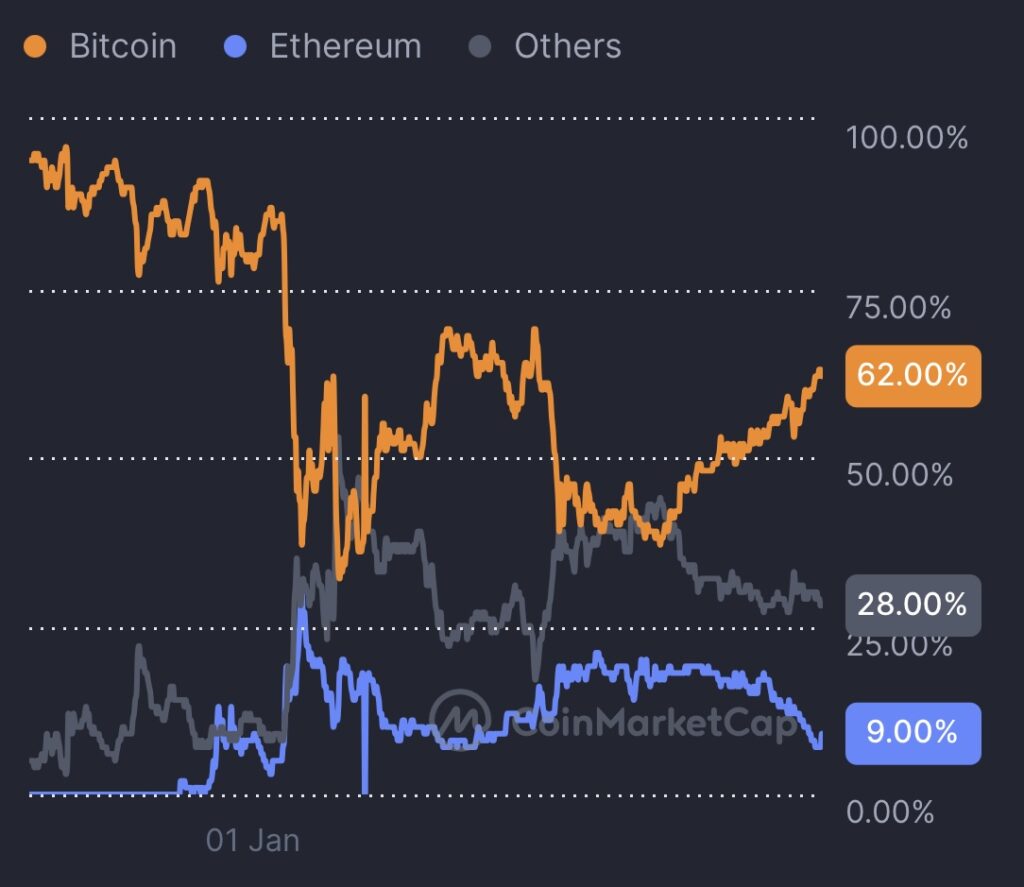Bitcoin Is Losing Ground To Altcoins, But Grayscale Announces A Quick Stabilization
Bitcoin (BTC) dominance drops to 62.6%, a slight decline amid the rise of Ethereum and altcoins. Zach Pandl from Grayscale believes this dominance will soon stabilize despite an uncertain macroeconomic context that continues to influence investor behavior.

A relative decline but a plateau expected for Bitcoin dominance
Bitcoin (BTC) remains the most dominant crypto, currently representing 62.6% of the crypto market. At 64.85% on May 3, this slight decline observed in recent weeks does not signal a lasting loss of leadership. Zach Pandl believes Bitcoin dominance is more likely to stabilize at this level, forming a plateau rather than collapsing. This stability reflects opposing forces: BTC retains its role as a safe haven, while altcoins benefit from increased adoption and innovation.

During periods of instability, such as inflation or geopolitical tensions, Bitcoin remains a digital refuge, thus strengthening its market dominance. Conversely, a calmer environment, with prospects of interest rate cuts and easing trade conflicts, stimulates appetite for riskier assets like altcoins. Zach Pandl summarizes this duality:
- In times of uncertainty, Bitcoin attracts capital as a safe haven;
- When confidence returns, investors seek returns through altcoins;
- This seesaw governs the overall dynamics of the crypto market.
The rise of altcoins driven by technological innovation
Ethereum, the main player among altcoins, recently saw its market capitalization grow by 36%, surpassing Bitcoin’s growth. This expansion relies on the increasing adoption of decentralized applications, smart contracts, and technical innovations within the blockchain ecosystem.
According to Zach Pandl, when market attention focuses on these innovations, Bitcoin dominance tends to decrease in favor of altcoins that embody the sector’s technological potential. This phenomenon illustrates a bifurcated crypto market between safe haven value and disruptive innovation.
Bitcoin: influence of institutional financial products on market dynamics
The rise of institutional financial products, such as Bitcoin ETFs, has strengthened BTC’s attractiveness among institutional investors. These instruments offer regulated and secure access to Bitcoin (BTC), channeling significant financial flows into this crypto. The effects manifest as:
- Consolidation of Bitcoin dominance through increased liquidity;
- A relative entry barrier for altcoins, more exposed to volatility;
- Growing institutional adoption that reinforces BTC’s perception as a safe asset.
This dynamic helps balance the pressure exerted by the rise of altcoins on Bitcoin’s market share.
Bitcoin thus operates in a market shaped by a balance between the quest for security and the search for innovation. Zach Pandl’s remarks perfectly illustrate this duality, which will continue to structure capital allocation in cryptos. Maintaining BTC dominance around 60% to 70% seems likely in the short to medium term, while altcoins continue their technological advancement.
Maximize your Cointribune experience with our "Read to Earn" program! For every article you read, earn points and access exclusive rewards. Sign up now and start earning benefits.
The world is evolving and adaptation is the best weapon to survive in this undulating universe. Originally a crypto community manager, I am interested in anything that is directly or indirectly related to blockchain and its derivatives. To share my experience and promote a field that I am passionate about, nothing is better than writing informative and relaxed articles.
The views, thoughts, and opinions expressed in this article belong solely to the author, and should not be taken as investment advice. Do your own research before taking any investment decisions.